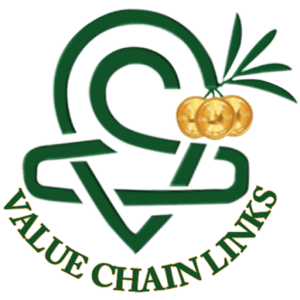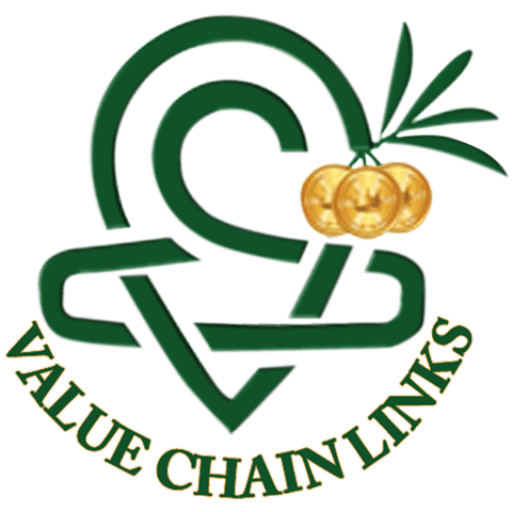
| LEADERS’ SHORT GUIDE TO CHANGE IN A TIME OF CRISIS |
| “Action produces change; planned action produces progress.” |
Seventy-four years ago, in the fall of 1948, a small group of 77 orphans, all holocaust survivors, climbed up on a dry, rocky hill and established a Kibbutz, which they later named Tzuba.
One of those orphans was a young lady who celebrated that day her twentieth birthday and whom seventeen years later I would call “mom.”
Before arriving in Israel, these Holocaust survivors suffered horrors and hunger in the death camps or when escaping from the Nazis.
When you experience hunger for extended periods (like those survivors did), you never forget that feeling, and you do everything to avoid it. We, the children of those survivors, were raised to respect food. We were never hungry.
Is it possible that almost 80 years after World War II and the Holocaust, the world will experience massive global hunger again?!
GLOBAL HUNGER SOON!?
The Economist’s article, titled “The coming food catastrophe” (May 19th, 2022), doesn’t leave space for speculations.
The facts and numbers inside the article say it all.
The global, broken value chain of food supply was exposed to everybody’s eyes during the COVID19 pandemic.
The cost of food raised, and the number of people who cannot be sure if they will get enough to eat soared by 400m, to 1.6b. Nearly 250m are on the brink of famine.
As if COVID-19 was not enough, now came the Russia–Ukraine war, which exposed the vulnerabilities of the global food value chain supply.
As a result, food availability and accessibility have diminished.

According to The Economist, “If, as is likely, the war drags on, and supplies from Russia and Ukraine are limited, hundreds of millions more people could fall into poverty. Political unrest will spread, children will be stunted, and people will starve.”
António Guterres, the UN secretary-general, warned of “a global food shortage” that could last for years.
Russia and Ukraine together supply 12% of globally traded calories. Since the war, wheat prices have soared by over 50%.
DISASTER OR OPPORTUNITY?
The current situation can be seen as both high risk and a great opportunity.
As you know, I prefer to see the opportunities, and there are many of them now.
The current situation underscores the undeveloped countries’ needs and food problems, which existed before the COVID19 crisis and the Russia-Ukraine war but are now more prominent and clear.
We are talking about three primary needs –
* Upgrading the agricultural sector and turning it into a productive industrial sector that contributes to the state economy and does not burden it.
* Self-reliance and production of most staple crops.
* Production (quality and quantity) and export of high added value crops. This is to improve the national payment balance and increase the influx of foreign currency.
ACTION PLAN
We may be entering several years where staple crops would be in shortage. What should we do?
It reminds me of a biblical story that took place thousands of years ago in Egypt.
In this story, a seven years drought was about to hit Egypt and the region.
The problem?
Pharaoh, the king of Egypt, had no clue when the drought would come and how to prepare himself and the people of Egypt.
But, Pharaoh was lucky; he had Joseph. Joseph was fortunate to have dreams, which opened his eyes to what was to come.
Then Joseph revealed before Pharaoh the sequence of events and how to prepare for those.
Pharaoh was so impressed with Joseph that he trusted the future of Egypt in his hands and nominated him to be in charge of the entire execution of the “getting ready for drought” operation.
Joseph’s plan worked well, and as a result, instead of suffering hunger, the Egyptians had plenty with a surplus to supply (export) the other people of the region.
Egypt ended the challenging drought event stronger than it started and a global superpower.
It was timely preparation that enabled Egypt not to suffer during the years of drought and even have enough to sell to the region’s people.
Last weekend’s column presented the outline and blueprint of the New Deal program by Dream Valley National Export Program (and platform). Read, it if you missed it.

There is a lot we can take from that historical story of Joseph and Egypt to our days. For example, even a king needs the help of experts to analyze the situation, prepare proper plans, and execute them.
Dream Valley’s New Deal for non-develop economies does precisely that.
What is Dream Valley’s New Deal?
Dream Valley’s New Deal does for farmers what Amazon did to SMEs and much more;
It “democratizes” farmers’ access to state-of-the-art technologies, services, markets, and everything farmers need to succeed. This leads to increased sales of agriculture products to premium markets, enabling farmers to improve their income and livelihood continuously.
ALL this became possible thanks to Dream Valley’s novel sustainable business model, one it has developed in recent years.
In light of climate change, and the challenges it brings (crisis), the implementation of the Dream Valley program is shifting from DESIRED to NECESSITY.
Eventually, any country that seeks to rapidly and safely advance its agro sector and economy will have to implement such a plan.
The choice is ours, whether to act now when conditions are relatively comfortable or wait for further deterioration and worsen.
We are certain only of one thing; our future life and economies will improve if we plan and act correctly.
No one can save us from ourselves but us. Let’s not “waste” this crisis and instead use its challenges to create benefits so we emerge stronger as Pharaoh and Joseph did with Egypt.

Q&A
I am frequently asked,
“You advise increasing the export of agro-product. But what about the people of our country? If we export staple crops / high-value crops, what would be of us? Are we doomed to suffer a shortage so we can export?”
Intuitively one may think that export comes at the expense of the local market, while in reality, export increase availability in local markets.
For example:
Ukraine exports grain, and its population have plenty of grains for domestic consumption.
Israel exports citrus and high-tech products and services, and Israelis have plenty of those.
Germany exports cars and hence enjoy an abundance of those.
The conclusion? If you want to have plenty of something, make sure to produce in high quality and quantity for export, and you will also have plenty for the local market.
In other words, “GO GLOBAL OR DIE LOCAL.”
A weak economy, shortage of food supply, and hunger are not a necessity of reality. With proper organization, it can be avoided while strengthening the national economy for years to come.
A crisis is a time for great leaders to shine.
| TAKEAWAYS»A GLOBAL SHORTAGE of staple crops is expected to last several years.» USE THE CRISIS to emerge stronger when it is over.» GOING GLOBAL (EXPORT) is the best way to solve local challenges. |
| If you enjoyed the article please share it with friends & colleagues. Follow me on LinkedIn. &» PRESS TO SUBSCRIBE « *** Mental and Economic Freedom Are Interconnected. *** |

